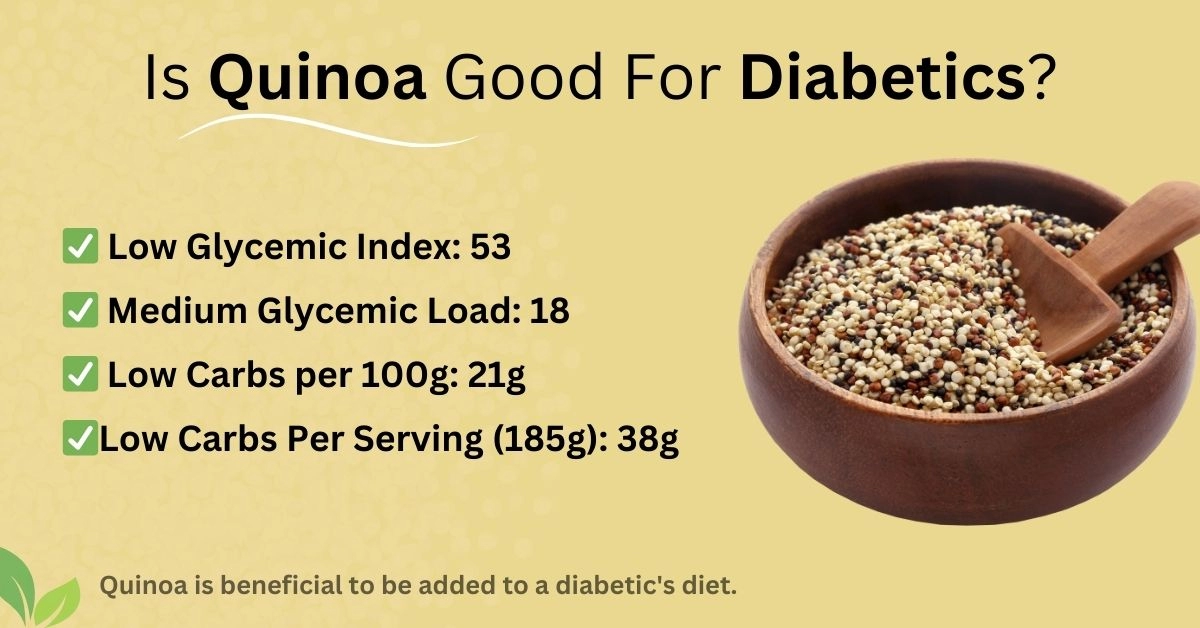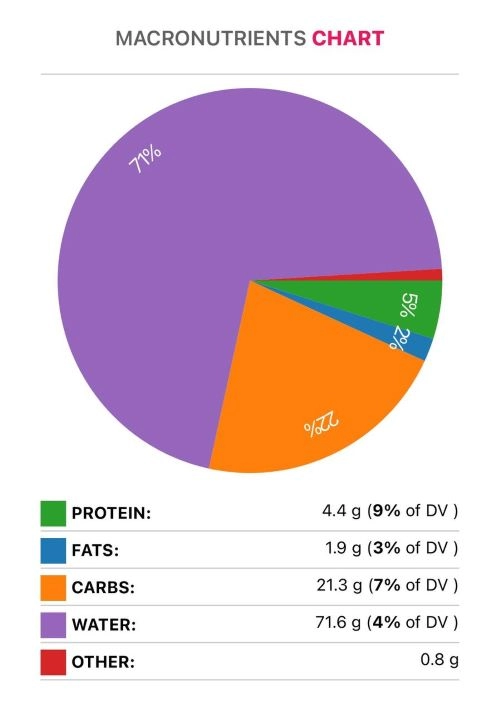Quinoa and Diabetes - Is It Good For Diabetics

Introduction
This article will discuss how quinoa can help control blood sugar levels and its beneficial effects on diabetes.
Quinoa is beneficial to be added to a diabetic's diet. It has been shown to have glycemic control. Below we will discuss the reason why quinoa is a good food to consume in diabetes.
Glycemic Index and Carbohydrates
The total amount of carbs you consume impacts your blood sugar levels after you eat, so it's critical to keep track of how much you consume. Low GI and carbohydrate diets are generally beneficial for controlling blood glucose levels.
Quinoa has a lower carbohydrate content than white rice.
Quinoa also has a glycemic index equal to 53, which is considered a low GI. This means quinoa consumption doesn't raise blood sugar levels, partly due to its low GI and partly because it contains fiber and protein, which slow the digestion process. You can visit our Glycemic index chart page for glycemic index values of 350+ pages (1).

Type-2 Diabetes
The protein and fiber content of quinoa makes it suitable for diabetes. It is a balanced grain that can even replace white rice in cooking and also be used in meal prepping as carbs (2)(3).
According to one study, a diet rich in Peruvian Andean grains, such as quinoa, can aid in the management of type 2 diabetes and high blood pressure. While black quinoa has the lowest lipid content, it has the highest omega-3 fatty acid and carotenoid content, according to a study comparing red, black, and white quinoa.
Omega-3s in quinoa may also help to reduce the harmful effects of diabetes, such as diabetic retinopathy.
Another study found that ingesting 500 mg of omega-3s per day lowered the incidence of eye damage in patients with type 2 diabetes (4).
